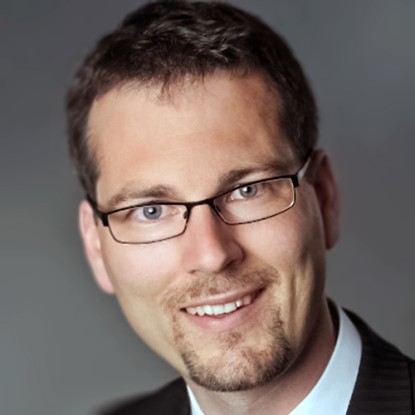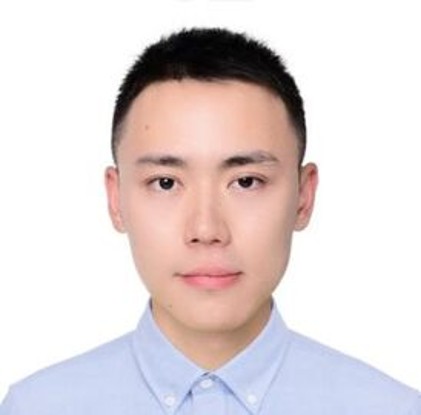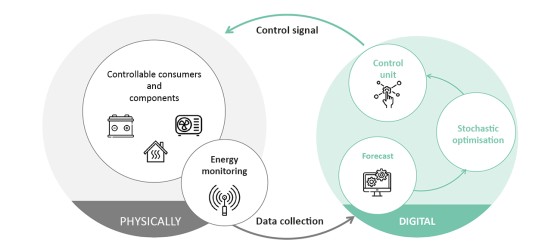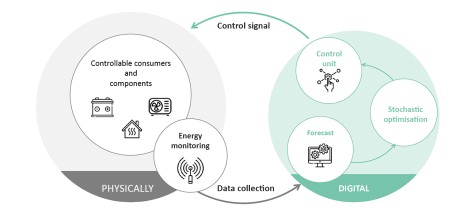EnEff:Stadt Campus Lichtwiese

Planning-based district control with the active digital twin
We are expanding the ‘digital twin’ developed in Phase II into an intelligent and autonomous system that ensures the optimised operation of the campus energy system. Digitalisation not only enables a holistic view of the campus energy system, but also ensures the optimal use of available resources.

An extension of the digital twin to include active control of individual energy system components enables an optimal short-term operating plan to be calculated for all controllable components, both thermally and electrically, and these components to be controlled automatically according to this operating plan. The plan is determined by mathematical optimisation, taking into account all energy sources. The processes of data acquisition, load forecasting, operational optimisation and control are to be integrated and fully automated.
The project comprises two central areas:
1. Conceptual and technical integration: The focus here is on the development and integration of controllable energy system components into the technical infrastructure of the digital twin.
2. Theoretical modelling and software implementation: The focus here is on the theoretical modelling of these components and the software implementation of the active control.
First, potential controllable consumers are identified. Shifting the heat load of individual buildings that are already equipped with building management technology is particularly suitable. These systems are network-compatible and have interfaces that enable the active digital twin to send control signals. These can be used to adjust the flow temperature in the secondary circuit, thereby shifting the heat load of the building over time.
Furthermore, we are investigating the integration of the planned energy system components as an overall system. These include the heat pump, solar thermal collectors, geothermal probes and buffer heat storage tank from project 2, as well as the components of the energy cell developed in project 1 and the energy cell itself.
The technical feasibility of a control system for all components and the expected flexibility potential will be investigated theoretically. At the same time, the energy monitoring for these components will be expanded and the option of a control system will be technically retrofitted if necessary.
In the second step, the digital twin developed in phase II will be expanded to enable active control. The existing energy data monitoring system will serve as the basis for this, but it will need to be expanded locally to increase data quality at important measuring points and to improve the distinction between the Lichtwiese campus and the entire TU Darmstadt network.
In this context, the energy monitoring system must also be continuously updated. This means that newly constructed buildings are recorded, changes to the network topology are correctly incorporated into the aggregation logic and the self-developed software is maintained in such a way that smooth operation is guaranteed.
The model for multimodal operation optimisation must be adapted to continuous operation and the new components to be taken into account. Some of the component models developed in phase II can still be used. However, the components to be controlled must be re-modelled in order to adequately represent their controllability.
The result of the mathematical optimisation is an operation plan that specifies how the components are to be controlled. This plan must then be translated into executable control signals for the components. Since the operational optimisation takes into account data with a lower temporal resolution, the control signals may have to be able to react to changes at short notice. This could require the use of additional control or regulation units. In this context, it should also be investigated at what frequency a recalculation of the operating plan is necessary and what temporal resolution it should have.
Finally, the active digital twin will be tested and evaluated in real, automated operation. In doing so, questions regarding implementation will initially be answered, such as the actual usable flexibility potential in operation with real restrictions due to active use.
After the successful implementation, questions regarding effectiveness will be examined, such as the increase in system efficiency, energy savings, the degree of utilisation of renewable energies and CO2 savings, as well as the scalability of the system.
Objectives
- Determining flexibility potential and integrating it into the digital twin
- Mathematical optimisation of operations management, taking into account the new flexibilities and creating control commands
Contact
| Name | Contact | |
|---|---|---|

| Prof. Dr. rer. nat. Florian Steinke | Florian.Steinke@eins.tu-d… +49 6151 16-21710 S3|10 306 |

Picture: Chenxi Jiang
| Chenxi Jiang M.Sc. Research Associate | chenxi.jiang@eins.tu-... +49 6151 16-21712 S3|10 |


